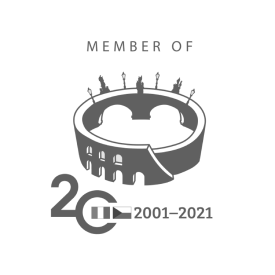
Real estate ownership in the Czech Republic, from dream to reality
Rules on mortgage eligibility by banks are still very stringent, and often, despite many individuals feeling ready and financially sound to undertake an investment aimed at purchasing a property, the bank may refuse to grant a mortgage loan.
Particularly for foreigners living in the Czech Republic, obtaining a mortgage can prove to be a hostile path, especially if the necessary residency documentation or tax requirements are lacking.
High real estate prices, rising construction costs, inflation, and, above all, defaulted mortgages are the main reasons why housing is unaffordable in the Czech Republic. Until a few years ago, if the bank refused to grant a mortgage, there was no alternative solution other than renting.
However, in the past few years, a new housing model that originated in the United Kingdom during the 1950s and is currently widely used in Anglo-American, despite some initial regulatory uncertainties, has been slowly gaining a foothold in the Czech Republic as well with the aim of bridging the gap between ownership and renting. This is the rent-to-own model, a service already offered through several projects, including MOOY, the startup Ownest, and the BYX program, which has revolutionized housing availability in the country.
How do rent-to-own models work?
Rent-to-own offers an alternative approach to buying a home without having to resort to a mortgage. It is an arrangement whereby a home is rented for a defined period, during which you have the option to purchase the property before the contract expires. Typically, rent-to-own agreements consist of two basic components: a standard lease and a purchase option. Rent-to-own houses therefore have a specific feature in the lease: the option (or obligation) to purchase the property after a pre-determined period.
The rent-to-own model can be divided into two subcategories. In the first variant, the interested party sets an agreement with the seller of the apartment to pay the rent and gradually purchase the apartment over several years while, in the second variant, the interested party signs an agreement with the seller to rent the apartment with a preferential right to purchase.
At the end of the lease term, depending on the type of contract, the customer is obligated to buy the property or can decline it. A lease-purchase agreement imposes an obligation on the client to purchase the property after the lease expires, while a lease with an option, gives them a choice. Clearly, this option involves the payment of a fee which is generally agreed in the contract to the seller from the uncertainty arising from a possible termination of the contract by the interested party.
However, the service is not without its criticalities, such as the pricing of the apartment and its actual inflation. Since this is a new type of service, it must be well-regulated by the law.
Rent-to-own in the Czech Republic
Zdenka Klapalová, president of the Association for Real Estate Market Development, sees the emergence of another housing offer as a good alternative. This model, which offers an alternative to mortgages and the deferral of financial burdens, can be particularly interesting for young couples who want home ownership. At the same time, from the perspective of homeowners, it resembles built-to-rent schemes but allows for the sale of units over time.
This option reflects the current market situation, in which most individuals are not able to obtain a mortgage or do not have the requirements (not only financial ones) to do so. However, some analyses show that in the long run, this solution will not be the preferred one in the Czech Republic, proving to be useful only in a transitional phase to respond to the current market situation. On the other hand, rent-to-own service providers have a different perspective believing that since rent-to-own can actually improve housing affordability, it is likely that other players will soon enter this emerging market.
The rent-to-own model is already popular in countries such as England, Australia, and the United States, where it has represented one of the main solutions to the problem of youth homelessness for more than a decade.
However, in the United States, these services have been accompanied by some criticalities. In 2022, the Financial Times conducted research on the largest US player in this sector of the housing market which revealed that most of their renters do not end up buying homes and that a significant portion of them have reported negative experiences with the company’s property management, including problems with rising expenses that have made it difficult for them to afford their rent.
In conclusion, the real estate landscape in the Czech Republic has been gradually transformed by the introduction of the ‘rent-to-own’ model. However, while rent-to-own represents an innovative response to the current market situation, it is important to address its challenges and criticalities, including the need for appropriate legislative regulations and the management of pricing and inflation.
Sources: https://www.expats.cz/, https://www.investopedia.com/, https://forbes.cz/, https://plus.ceskereality.cz/




